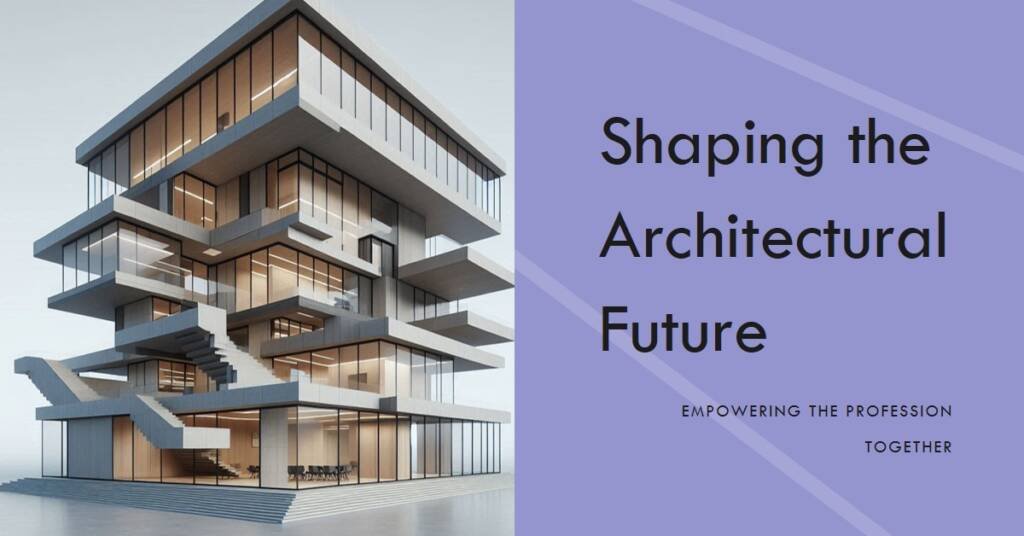
Table of Contents
- Introduction to the National Council of Architectural Registration Boards (NCARB)
- History and Evolution of NCARB
- The Role of NCARB in Licensing Architects
- NCARB’s Impact on Architectural Education
- Promoting Diversity and Inclusion in Architecture
- NCARB’s Tools and Resources for Architects
- Innovations and Future Directions of NCARB
- Challenges Facing the Architecture Profession
- Conclusion
Introduction to the National Council of Architectural Registration Boards (NCARB)
The National Council of Architectural Registration Boards (NCARB) is an integral organization that plays a pivotal role in shaping the landscape of the architectural profession in the United States. Established in 1919, NCARB was formed to address the need for standardized regulations and practices in the field of architecture. The organization serves as a collective voice for the state architectural registration boards, providing guidance and support to ensure that all architects meet the necessary educational and professional criteria for licensure.
One of the core missions of NCARB is to protect the public health, safety, and welfare through rigorous licensing standards. This is achieved by establishing uniform guidelines that govern the practice of architecture across different states, ensuring that all architects adhere to a consistent level of competency. Additionally, the organization is committed to promoting best practices within the industry, which includes credentialing processes that helps maintain the integrity of the profession. By overseeing the Architect Registration Examination (ARE) and the Intern Development Program (IDP), NCARB ensures that aspiring architects receive the essential training and knowledge needed for a successful career.
Furthermore, NCARB plays a critical role in standard-setting by continuously refining educational requirements and licensure processes to adapt to the evolving needs of the profession. They advocate for innovation and collaboration among state boards, educational institutions, and the architectural community, thereby ensuring that architects are well-equipped to meet contemporary challenges in design and practice. The significance of NCARB cannot be overstated; it is a cornerstone in fostering professional growth and integrity within the architectural field, significantly influencing how architects are trained, licensed, and recognized across the nation.
History and Evolution of NCARB
The National Council of Architectural Registration Boards (NCARB) was established in 1919 during a period of significant change in the architectural profession in the United States. Before its formation, the practice of architecture was largely unregulated, leading to varying standards and qualifications among practitioners. Recognizing the need for a standardized approach to architectural licensure, the NCARB was born out of discussions among state boards that aimed to promote uniformity in the licensing process across different jurisdictions.
In its early years, NCARB focused on developing a model licensing law and facilitating cooperation between state boards to enhance the integrity of the profession. A pivotal moment in its history occurred in 1924 with the introduction of the first Architect Registration Examination (ARE), which aimed to assess candidates’ knowledge and skills consistently. This examination served as a foundation for ensuring that architects met a proper standard of competency before being licensed to practice.
The Role of NCARB in Licensing Architects
The National Council of Architectural Registration Boards (NCARB) plays a pivotal role in the licensing of architects across the United States. As a key organization, NCARB is responsible for establishing and maintaining the standards required for architectural practice, ensuring that these standards reflect the evolving needs of the profession. One of the primary functions of NCARB is to oversee the process of obtaining licensure, which is crucial for aspiring architects who wish to practice legally and ethically.
Licensure involves multiple steps, including education, experience, and examination. To begin this journey, candidates must complete a professional degree in architecture from an accredited institution. Once educated, individuals enter the Architectural Experience Program (AXP), which provides valuable hands-on experience under the supervision of licensed professionals. This structured experience is vital, as it equips future architects with the necessary skills and knowledge to succeed in their careers.
Following the completion of the AXP, candidates must successfully pass the Architect Registration Examination (ARE). This rigorous examination assesses a candidate’s competence in various aspects of architecture, including planning and design, construction documentation, and project management. NCARB offers resources and support to help candidates prepare for the ARE, thus reinforcing its commitment to upholding the standards of practice within the profession.
In addition to facilitating licensure, NCARB also collaborates with state licensing boards to maintain uniform standards across the country. This partnership ensures that each board adheres to a consistent set of guidelines, promoting professionalism and public safety. By continuously updating these standards in response to changes in technology, methods, and regulations, NCARB plays a crucial role in shaping the future of the architecture profession. The dedication to quality and integrity in licensing not only protects the reputation of architects but ultimately enhances the built environment for society as a whole.
NCARB’s Impact on Architectural Education
The National Council of Architectural Registration Boards (NCARB) plays a pivotal role in shaping architectural education in the United States. Its influence is primarily exercised through various initiatives designed to align educational programs with the evolving demands of the profession. One notable program is the Integrated Path to Architectural Licensure (IPAL), which aims to streamline the process of becoming a licensed architect. This initiative emphasizes the importance of integrating practical experience within academic curricula, thereby ensuring that students acquire vital skills that meet contemporary professional standards.
NCARB collaborates closely with architectural schools to foster an educational environment that prepares students for the realities of the architectural field. This partnership is essential in revising existing curricula and accreditation standards. By facilitating alignment between educational institutions and practice requirements, NCARB ensures that emerging architects are well-equipped with the technical knowledge and practical skills necessary for success. The collaboration often involves feedback from the practicing architects and industry leaders, which helps educational institutions maintain relevance in their offerings.
Additionally, NCARB has established resources designed to aid schools in implementing the IPAL model effectively. These resources range from the provision of guidelines to technical support aimed at integrating licensure requirements within academic programs. The goal is not only to enhance the educational framework but also to promote a seamless transition from academia to licensure, ultimately fostering a generation of architects who are better prepared for the challenges ahead. As NCARB continues to refine its educational initiatives, the impact on architectural education and the profession as a whole will undoubtedly be profound. This ongoing evolution highlights the necessity of adapting to new standards and expectations, ensuring that future architects are both competent and innovative in their practice.
Promoting Diversity and Inclusion in Architecture
The National Council of Architectural Registration Boards (NCARB) has made significant strides in promoting diversity and inclusion within the architecture profession. Understanding that diversity enriches the architectural dialogue and leads to more innovative and culturally relevant outcomes, NCARB has initiated several programs aimed at increasing participation from underrepresented groups in architecture. The organization recognizes that the architecture field has historically lacked diversity, and by fostering inclusive practices, it aims to reflect the diverse communities that architects serve.
One key initiative is the NCARB Diversity and Inclusion Task Force, which focuses on identifying barriers to entry for underrepresented groups and proposing actionable solutions. This task force engages with a wide range of stakeholders, including educational institutions, professional organizations, and advocacy groups, to create pathways for aspiring architects from varied backgrounds. Their efforts include developing mentorship schemes, outreach programs, and scholarships that specifically target underrepresented minorities and marginalized communities.
Furthermore, NCARB is committed to integrating diversity metrics into its programs and policies. By actively monitoring and reporting on these metrics, the organization is addressing systemic inequalities within the profession. This data-driven approach not only facilitates accountability but also helps in tailoring resources and support for individuals from diverse backgrounds. NCARB’s annual reports highlight the progress made towards inclusivity, showcasing the importance of a diverse workforce in enriching creative solutions in architecture.
NCARB has also partnered with various educational institutions to diversify the curriculum and enhance recruitment efforts for diverse student populations. These collaborations aim to create inclusive learning environments that celebrate varied perspectives, ultimately enriching the architectural profession. By investing in diversity and inclusion initiatives, NCARB not only champions equitable representation but also strengthens the future of architecture as a whole.
NCARB’s Tools and Resources for Architects
The National Council of Architectural Registration Boards (NCARB) provides a comprehensive suite of tools and resources aimed at supporting architects throughout their careers. One of the standout offerings is their continuous education opportunities, which are essential for professionals seeking to stay current with industry standards and practices. By engaging in these programs, architects enhance their knowledge and skills, ensuring they can effectively address the evolving demands of the marketplace.
In addition to educational programs, NCARB offers a variety of exam preparation resources that are invaluable for individuals preparing for the Architectural Registration Examination (ARE). These resources include study guides, practice exams, and online platforms that allow candidates to familiarize themselves with the exam structure and question types. By using these tools, aspiring architects can optimize their study efforts, thereby increasing their chances of passing the examination with confidence.
Furthermore, NCARB provides detailed guides that assist architects in navigating the intricate licensure process. Understanding the steps required to obtain licensure can be daunting for many, but the resources offered by NCARB break down the requirements by state and jurisdiction. This tailored approach ensures that architects are not only aware of the necessary qualifications but also understand the importance of maintaining their licensure through continuing education and other professional development activities.
Overall, the tools and resources provided by NCARB serve as an essential foundation for architects at all stages of their careers. Through ongoing education, effective exam preparation, and clear guidance on licensure requirements, NCARB plays a pivotal role in shaping the future of the architectural profession, fostering a well-prepared, knowledgeable, and competent workforce.
Innovations and Future Directions of NCARB
The National Council of Architectural Registration Boards (NCARB) has consistently positioned itself at the forefront of architectural practice and education by embracing innovations and responding to evolving demands within the profession. One significant area where NCARB is making strides is through the integration of technology into various aspects of architectural registration and education. Initiatives such as the implementation of digital platforms for licensure applications and exam processes aim to enhance efficiency while ensuring compliance with rigorous standards. These platforms not only streamline the process for applicants but also allow for comprehensive data collection, which can inform future decisions related to architectural practice.
In addition to technological advancements, NCARB has also recognized the need to revise educational standards in the field of architecture. The organization is actively engaged in re-evaluating the ways in which educational programs align with emerging trends in sustainable design, urbanism, and digital practices. By collaborating with educational institutions, NCARB is helping to establish frameworks that ensure future architects are adept in a rapidly changing environment. This collaboration emphasizes the importance of incorporating diverse design viewpoints and practices that reflect the complexity of communities today.
Moreover, NCARB is launching various initiatives aimed at enhancing professional development and licensure accessibility. Programs designed to engage underrepresented groups in the architectural field are essential to shaping a profession that mirrors the diversity of society. Through initiatives that support mentorship, scholarships, and outreach, NCARB is taking significant steps toward creating a more inclusive and responsive architectural landscape. These innovations not only aim to elevate the standards of the profession but also ensure that future architects are equipped with the necessary tools to navigate the challenges ahead, thus reinforcing the role of NCARB as a pivotal body in shaping the future of architecture.
Challenges Facing the Architecture Profession
The architecture profession is currently navigating a myriad of challenges that significantly impact both the practice and its future. One of the foremost issues is sustainability. As the urgency to address climate change escalates, architects are increasingly held accountable for creating environmentally responsible designs. This includes not only the materials used in construction but also the overall energy efficiency and lifecycle impacts of buildings. The demand for sustainable architecture compels architects to adopt innovative practices and stay abreast of emerging technologies that can enhance ecological performance.
Another significant challenge arises from regulatory complexities. Architects operate within a web of local, state, and federal regulations that can vary widely across jurisdictions. Compliance with these regulations is not only crucial for securing building permits but also for ensuring public safety. Navigating this complex landscape requires architects to maintain a robust understanding of the constantly evolving legal framework surrounding construction and design. This can be particularly burdensome for smaller firms that lack the expansive resources of larger organizations.
Lastly, the changing nature of client demands presents an additional layer of challenge for architects. Clients today are more informed and expect high levels of engagement throughout the design process. The rise of digital tools has empowered clients to express their preferences more effectively, leading to an increased emphasis on collaboration and customized solutions. Consequently, architects must adapt their communication strategies and design methodologies to better align with these evolving expectations, which can strain traditional practices.
The National Council of Architectural Registration Boards (NCARB) is actively addressing these challenges by advocating for policy changes and providing valuable resources to support architects. Through initiatives aimed at fostering sustainable practices, simplifying regulatory compliance, and enhancing client-architect engagement, NCARB plays a crucial role in ensuring that the architecture profession can thrive amidst these contemporary challenges.


Conclusion
The National Council of Architectural Registration Boards (NCARB) plays a pivotal role in the architecture profession, ensuring that standards for education, examination, and licensure are upheld across the United States. Throughout this blog post, we have explored the various initiatives that NCARB has implemented to streamline the licensure process and adapt to the evolving demands of the industry. One of the most significant contributions of NCARB is the creation of the Integrated Path to Architectural Licensure (IPAL), which allows students to gain practical experience while completing their degree. This innovative approach not only helps to prepare future architects for the complexities of real-world practice but also addresses the critical issue of licensure accessibility.
Furthermore, NCARB’s emphasis on diversity and inclusivity reflects a broader commitment to cultivating a profession that resonates with the diverse communities architects serve. Through scholarships, outreach programs, and partnerships with educational institutions, NCARB is actively working to create pathways for underrepresented groups in architecture. This focus on inclusion ensures that diverse perspectives are valued and contribute to the richness of architectural discourse.
As we look toward the future, the collaborative efforts among NCARB, educational institutions, and professional organizations will be vital to address challenges such as technology integration, sustainability, and regulatory shifts within the architectural field. Such collaboration will not only enhance the educational experience for aspiring architects but will also fortify the profession’s adaptability in a rapidly changing landscape.
In summary, the influence of NCARB is profound and ongoing, serving as a guiding force in shaping the profession. Through its commitment to innovation, inclusivity, and collaboration, NCARB continues to foster a resilient and progressive architectural community, ensuring that the profession meets the needs of society while upholding the highest standards of practice.



